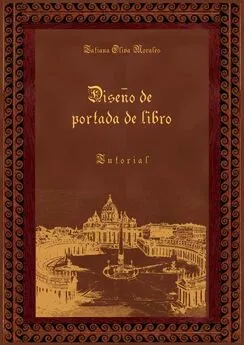Oskar Andreasson - Iptables Tutorial 1.2.2
- Название:Iptables Tutorial 1.2.2
- Автор:
- Жанр:
- Издательство:неизвестно
- Год:неизвестен
- ISBN:нет данных
- Рейтинг:
- Избранное:Добавить в избранное
-
Отзывы:
-
Ваша оценка:
Oskar Andreasson - Iptables Tutorial 1.2.2 краткое содержание
Iptables Tutorial 1.2.2 - читать онлайн бесплатно полную версию (весь текст целиком)
Интервал:
Закладка:
● Code 0 - Network unreachable - Tells you if a specific network is currently unreachable.
● Code 1 - Host unreachable - Tells you if a specific host is currently unreachable.
● Code 2 - Protocol unreachable - This code tells you if a specific protocol (tcp, udp, etc) can not be reached at the moment.
● Code 3 - Port unreachable - If a port (ssh, http, ftp-data, etc) is not reachable, you will get this message.
● Code 4 - Fragmentation needed and DF set - If a packet needs to be fragmented to be delivered, but the Do not fragment bit is set in the packet, the gateway will return this message.
● Code 5 - Source route failed - If a source route failed for some reason, this message is returned.
● Code 6 - Destination network unknown - If there is no route to a specific network, this message is returned.
● Code 7 - Destination host unknown - If there is no route to a specific host, this message is returned.
● Code 8 - Source host isolated (obsolete) - If a host is isolated, this message should be returned. This code is obsoleted today.
● Code 9 - Destination network administratively prohibited - If a network was blocked at a gateway and your packet was unable to reach it because of this, you should get this ICMP code back.
● Code 10 - Destination host administratively prohibited - If you where unable to reach a host because it was administratively prohibited (e.g., routing administration), you will get this message back.
● Code 11 - Network unreachable for TOS - If a network was unreachable because of a bad TOS setting in your packet, this code will be generated as a return packet.
● Code 12 - Host unreachable for TOS - If your packet was unable to reach a host because of the TOS of the packet, this is the message you get back.
● Code 13 - Communication administratively prohibited by filtering - If the packet was prohibited by some kind of filtering (e.g., firewalling), we get a code 13 back.
● Code 14 - Host precedence violation - This is sent by the first hop router to notify a connected host, to notify the host that the used precedence is not permitted for a specific destination/source combination.
● Code 15 - Precedence cutoff in effect - The first hop router may send this message to a host if the datagram it received had a too low precedence level set in it.
On top of this, it also contains a small "data" part, which should be the whole Internet header (IP header) and 64 bits of the original IP datagram. If the next level protocol contains any ports, etc, it is assumed that the ports should be available in the extra 64 bits.
Source Quench

A source quench packet can be sent to tell the originating source of a packet or stream of packets to slow down when continuing to send data. Note that gateway or destination host that the packets traverses can also be quiet and silently discard the packets, instead of sending any source quench packets.
This packet contains no extra header except the data portion, which contains the internet header plus 64 bits of the original data datagram. This is used to match the source quench message to the correct process, which is currently sending data through the gateway or to the destination host.
All source quench packets have their ICMP types set to 4. They have no codes except 0.
NoteToday, there are a couple of new possible ways of notifying the sending and receiving host that a gateway or destination host is overloaded. One way for example is the ECN (Explicit Congestion Notification) system.
Redirect

The ICMP Redirect type is sent in a single case. Consider this, you have a network (192.168.0.0/24) with several clients and hosts on it, and two gateways. One gateway to a 10.0.0.0/24 network, and a default gateway to the rest of the Internet. Now consider if one of the hosts on the 192.168.0.0/24 network has no route set to 10.0.0.0/24, but it has the default gateway set. It sends a packet to the default gateway, which of course knows about the 10.0.0.0/24 network. The default gateway can deduce that it is faster to send the packet directly to the 10.0.0.0/24 gateway since the packet will enter and leave the gateway on the same interface. The default gateway will hence send out a single ICMP Redirect packet to the host, telling it about the real gateway, and then sending the packet on to the 10.0.0.0/24 gateway. The host will now know about the closest 10.0.0.0/24 gateway, and hopefully use it in the future.
The main header of the Redirect type is the Gateway Internet Address field. This field tells the host about the proper gateway, which should really be used. The packet also contains the IP header of the original packet, and the 64 first bits of data in the original packet, which is used to connect it to the proper process sending the data.
The Redirect type has 4 different codes as well, these are the following.
• Code 0 - Redirect for network - Only used for redirects for a whole network (e.g., the example above).
• Code 1 - Redirect for host - Only used for redirects of a specific host (e.g., a host route).
• Code 2 - Redirect for TOS and network - Only used for redirects of a specific Type of Service and to a whole network. Used as code 0, but also based on the TOS.
• Code 3 - Redirect for TOS and host - Only used for redirects of a specific Type of Service and to a specific host. Used as code 1, but also based on the TOS in other words.
TTL equals 0

The TTL equals 0 ICMP type is also known as Time Exceeded Message and has type 11 set to it, and has 2 ICMP codes available. If the TTL field reaches 0 during transit through a gateway or fragment reassembly on the destination host, the packet must be discarded. To notify the sending host of this problem, we can send a TTL equals 0 ICMP packet. The sender can then raise the TTL of outgoing packets to this destination if necessary.
The packet only contains the extra data portion of the packet. The data field contains the Internet header plus 64 bits of the data of the IP packet, so that the other end may match the packet to the proper process. As previously mentioned, the TTL equals 0 type can have two codes.
• Code 0 - TTL equals 0 during transit - This is sent to the sending host if the original packet TTL reached 0 when it was forwarded by a gateway.
• Code 1 - TTL equals 0 during reassembly - This is sent if the original packet was fragmented, and TTL reached 0 during reassembly of the fragments. This code should only be sent from the destination host.
Parameter problem

The parameter problem ICMP uses type 12 and it has 2 codes that it uses as well. Parameter problem messages are used to tell the sending host that the gateway or receiving host had problems understanding parts of the IP headers such as errors, or that some required options where missing.
The parameter problem type contains one special header, which is a pointer to the field that caused the error in the original packet, if the code is 0 that is. The following codes are available:
• Code 0 - IP header bad (catchall error) - This is a catchall error message as discussed just above. Together with the pointer, this code is used to point to which part of the IP header contained an error.
• Code 1 - Required options missing - If an IP option that is required is missing, this code is used to tell about it.
Timestamp request/reply

The timestamp type is obsolete these days, but we bring it up briefly here. Both the reply and the request has a single code (0). The request is type 13 while the reply is type 14. The timestamp packets contains 3 32-bit timestamps counting the milliseconds since midnight UT (Universal Time).
The first timestamp is the Originate timestamp, which contains the last time the sender touched the packet. The receive timestamp is the time that the echoing host first touched the packet and the transmit timestamp is the last timestamp set just previous to sending the packet.
Each timestamp message also contains the same identifiers and sequence numbers as the ICMP echo packets.
Information request/reply

The information request and reply types are obsolete since there are protocols on top of the IP protocol that can now take care of this when necessary (DHCP, etc). The information request generates a reply from any answering host on the network that we are attached to.
The host that wishes to receive information creates a packet with the source address set to the network we are attached to (for example, 192.168.0.0), and the destination network set to 0. The reply will contain information about our numbers (netmask and ip address).
The information request is run through ICMP type 15 while the reply is sent via type 16.
SCTP Characteristics
Stream Control Transmission Protocol (SCTP) is a relatively new protocol in the game, but since it is growing in usage and complements the TCP and UDP protocols, I have chosen to add this section about it. It has an even higher reliability than TCP, and at the same time a lower overhead from protocol headers.
SCTP has a couple of very interesting features that can be interesting. For those who wish to learn more about this, read the RFC 3286 - An Introduction to the Stream Control Transmission Protocol and RFC 2960 - Stream Control Transmission Protocol document. The first document is an introduction to SCTP and should be very interesting to people who are still in need of more information. The second document is the actual specification for the protocol, which might be less interesting unless you are developing for the protocol or are really interested.
The protocol was originally developed for Telephony over IP, or Voice over IP (VoIP), and has some very interesting attributes due to this. Industry grade VoIP requires very high reliability for one, and this means that a lot of resilience has to be built into the system to handle different kind of problems. The following is a list of the basic features of SCTP.
• Unicast with Multicast properties. This means it is a point-to-point protocol but with the ability to use several addresses at the same end host. It can in other words use different paths to reach the end host. TCP in comparison breaks if the transport path breaks, unless the IP protocol corrects it.
• Reliable transmission. It uses checksums and SACK to detect corrupted, damaged, discarded, duplicated and reordered data. It can then retransmit data as necessary. This is pretty much the same as TCP, but SCTP is more resilient when it comes to reordered data and allows for faster pickups.
Читать дальшеИнтервал:
Закладка:










